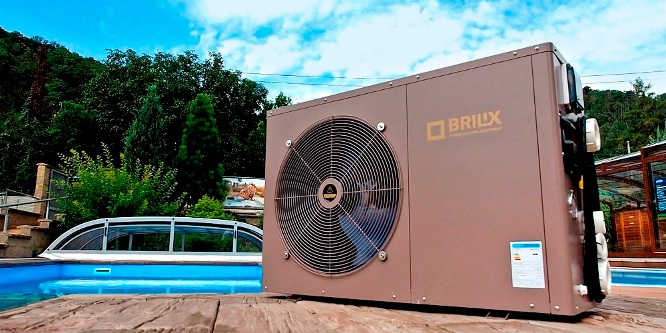
How does a heat pump work
A similar principle to that of a heat pump is used, for example, in a refrigerator. In it, the energy of the cooled food is transferred to heat, which is then released through the radiator on the back of the fridge. It effectively transfers the low temperature inside the refrigerator to a higher temperature than that of the room.
It's the same with a heat pump - it can extract heat, for example, from water at 8°C and raise its temperature up to 50°C. However, to increase the temperature potential, it's necessary to supply a certain amount of energy to the compressor, which compresses the working fluid.
The principle of operation of a heat pump is straightforward. The compressed liquid heat transfer medium expands in the expansion valve and in the evaporator, changing its state from liquid to gas (vapor). This causes it to cool down to a low temperature and absorb heat from its surroundings (from water, the ground, or the air) and heats up in the process.
The gaseous heat transfer medium is drawn in and compressed by the compressor. The compression of the gas, along with the work supplied by the compressor, leads to an increase in the gas temperature. In the condenser, it liquefies and typically raises the condenser temperature to about 55°C. The condenser is designed as a heat exchanger, where the acquired energy is transferred to the water in the heating circuit. This cycle repeats itself.

TIP: Need a heat pump for your pool? Take advantage of our offer of heat pumps designed for pools.
How does a heat pump work?
A heat pump extracts heat from one side of the system, raises the temperature of the heat transfer fluid in the system, and transfers it to the pool water. In other words, it takes low-temperature energy from the surrounding air, ground, or water, uses a compressor to elevate this energy to a higher temperature level, and delivers it for heating the pool water. The heat pump is activated based on the water temperature in the pool or through the automation of pool technology.
The efficiency of the heat pump's operating cycle is expressed by the coefficient of performance (COP), which is the ratio of the compressor's electrical power input to the thermal output obtained from the heat pump. The COP and the overall economic benefit of the heat pump depend on two temperatures – the temperature of the environment from which we extract heat and the temperature of the water in the heating system. The effective threshold temperature on the heat extraction side is approximately 15°C.
However, at lower temperatures, the efficiency of the heat pump decreases to the point where its operation becomes uneconomical. Overall, operation can be relatively expensive. When electricity providers no longer support heat pumps with low tariffs for electrical power, the operation of pumps becomes less financially viable.
